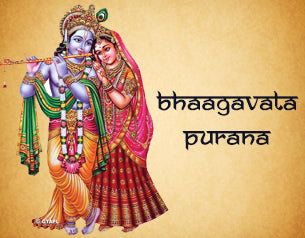This Purana assumes a great significance, especially within the Bhakti movement, due to its narration of the exploits of Lord Krishna. This Purana in twelve chapters called Skandas has narrated in its tenth Skanda, the greatness and sports of Lord Krishna, in all its colours and fashion.
Though there are descriptions of the other incarnations of Vishnu, the presentation of Narasimha and Krishna avatars is the highlight.
This Purana is held very sacred by Hindus, especially by the Bhagavata cult and by the followers of the Pushtimarga of Vallabhachaarya and the followers of Chaitanya Mahaprabhu.
The Bhagavata Purana, as different Puranas, talks about an extensive variety of subjects including cosmology, lineage, topography, folklore, legend, music, move, yoga, and culture. As it starts, the powers of fiendishness have won a war between the considerate devas (divinities) and wickedness asuras (evil spirits) and now govern the universe.
Truth re-develops as Krishna, (called "Hari" and "Vasudeva" ) first makes peace with the evil spirits, comprehends them and after that innovatively vanquishes them, bringing back expectation, equity, flexibility, and bliss a cyclic subject that shows up in numerous legends.
The Bhagavata Purana is a loved content in Vaishnavism, a Hindu custom that worships Vishnu. The content shows a type of religion that rivals that of the Vedas, wherein bhakti at last prompts self-learning, freedom, and joy. However, the Bhagavata Purana states that the inward nature and external type of Krishna are indistinguishable to the Vedas and this is the thing that saves the world from the powers of underhandedness. An oft-cited verse is utilized by some Krishna groups to state that the content itself is Krishna in the abstract frame.
The date of arrangement is most likely between the eighth and the tenth century CE, yet might be as right on time as the sixth century CE. Original copies get by in various conflicting forms changed through the eighteenth century making different recensions both in similar dialects and crosswise over various Indian dialects.
The content comprises twelve books (skandhas) totaling 332 sections (adhyayas) and in the vicinity of 16,000 and 18,000 verses relying upon the recension. The tenth book, with around 4,000 verses, has been the most well-known and generally examined. It was the principal Purana to be converted into a European dialect as a French interpretation of a Tamil form showed up in 1788 and acquainted numerous Europeans with Hinduism and eighteenth-century Hindu culture amid the pilgrim period.
Bhagavata Purana
SystemAdmin GiriAustralia









